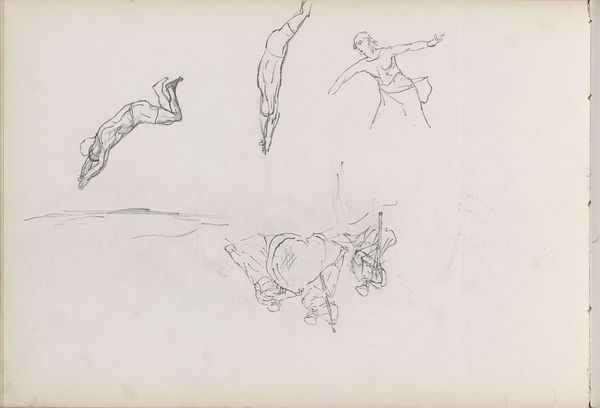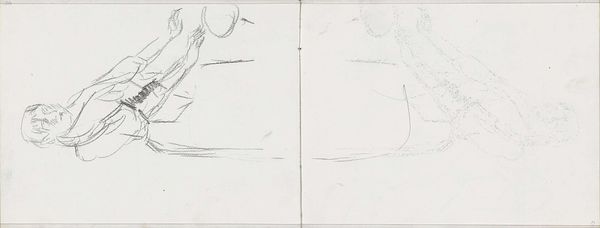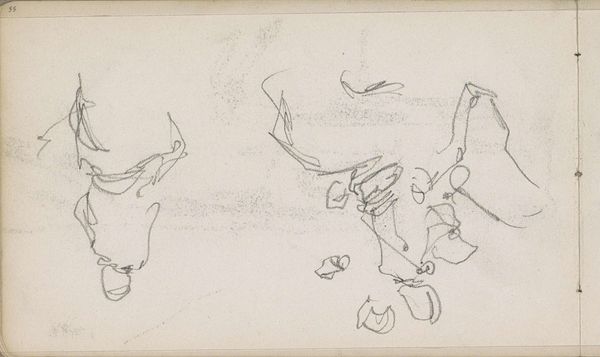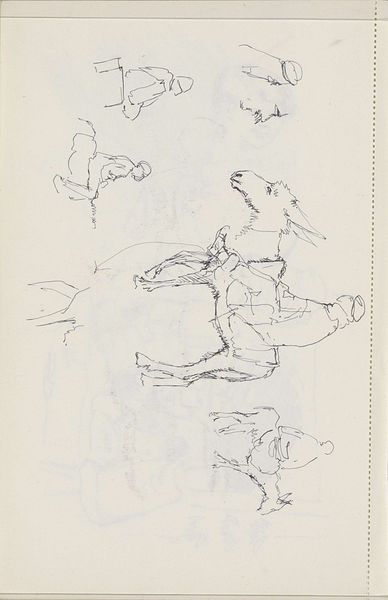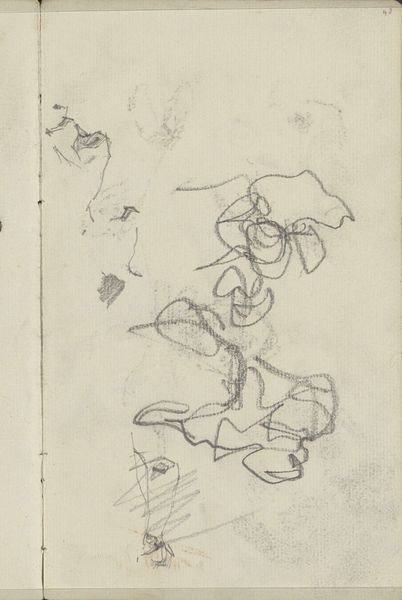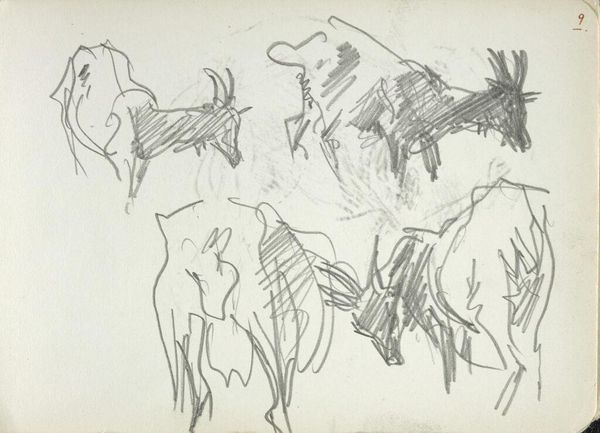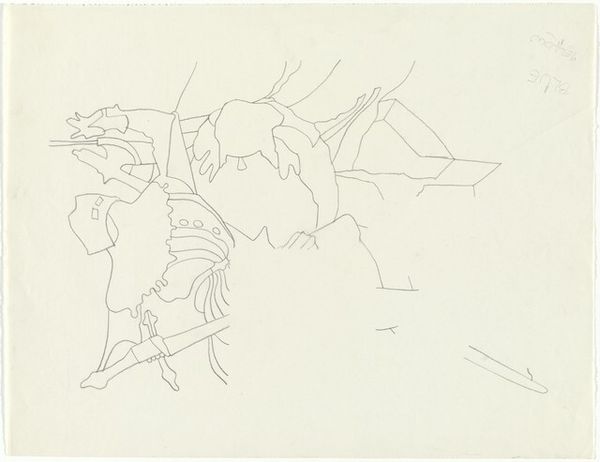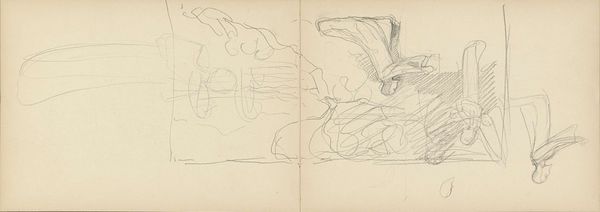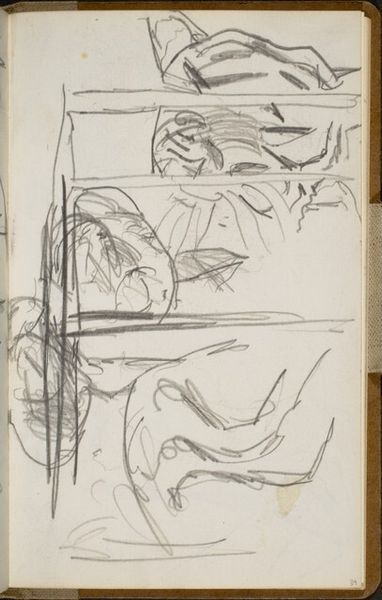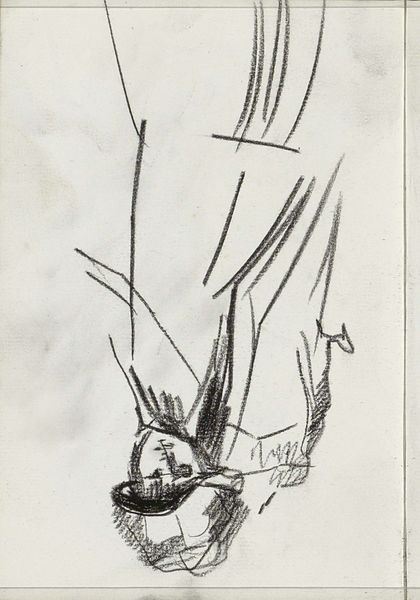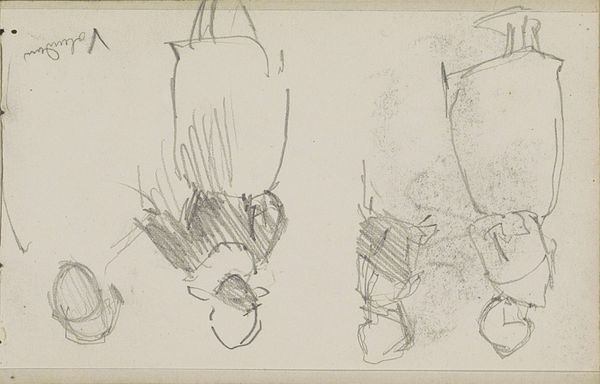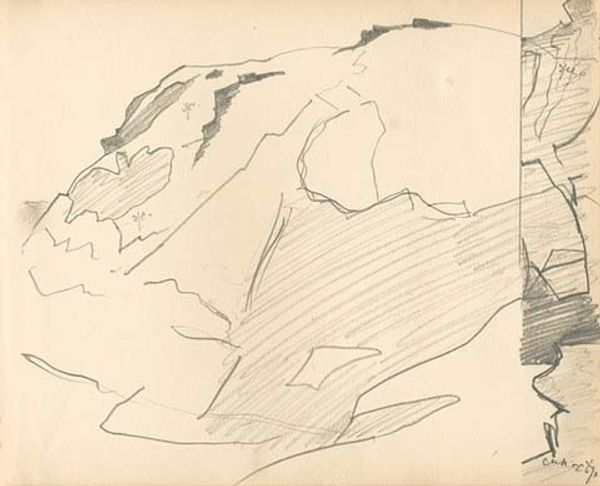
drawing, print, ink
#
portrait
#
drawing
# print
#
figuration
#
ink
#
ink drawing experimentation
#
nude
#
modernism
Dimensions: sheet: 25 x 37.8 cm (9 13/16 x 14 7/8 in.) (irregular)
Copyright: National Gallery of Art: CC0 1.0
Curator: Welcome! We're looking at "Three Women," an ink drawing made around 1925 by the artist Jules Pascin. Editor: My initial reaction is that it's remarkably sparse. It’s mostly blank space, with these almost ephemeral figures sketched within. It's a very light, almost dreamlike composition. Curator: Yes, there's a definite sense of transience. Consider how parasols feature repeatedly across art history; they’re indicators of status and protection from the sun, which speaks to notions of privilege, beauty standards, and perhaps even a shielding from harsher realities. And here, they're hovering above nudes in domestic repose. What tensions arise? Editor: That juxtaposition is what draws me in. Pascin employs such minimal lines, achieving a sort of deliberate incompleteness. Look at the angles of the bodies and how the limbs are cut off, yet, there's a compositional coherence, right? A definite tension, and an interesting use of negative space. Curator: Precisely, which encourages active engagement from the viewer. Now think about Pascin’s cultural background and travels during the early 20th century. Can we read these figures as modern odalisques or updated symbols of femininity in the face of Modernism's disruption of historical artistic canons? Editor: You bring up a good point! If we analyze these outlines further, the almost whimsical quality softens a reading of female subjugation. There is a visual playfulness in their poses. I can appreciate it from a formal point of view, admiring his masterful grasp of contour and shape conveyed through economy. Curator: And Pascin used ink drawings like this to illustrate popular novels or books, a strategy that made him very well known to an increasingly larger population in both the United States and France. Perhaps then he isn't just questioning ideals about modern beauty, but modern systems of art consumption as well? Editor: The image certainly invites these layers of interpretations; from purely visual and compositional aspects, up to wider discussions of art’s place in a rapidly transforming society. Curator: Exactly! It gives one a lot to consider, and appreciate. Editor: Indeed. It's those seemingly slight formal decisions, along with symbolic layers, which spark further explorations into art.
Comments
No comments
Be the first to comment and join the conversation on the ultimate creative platform.
